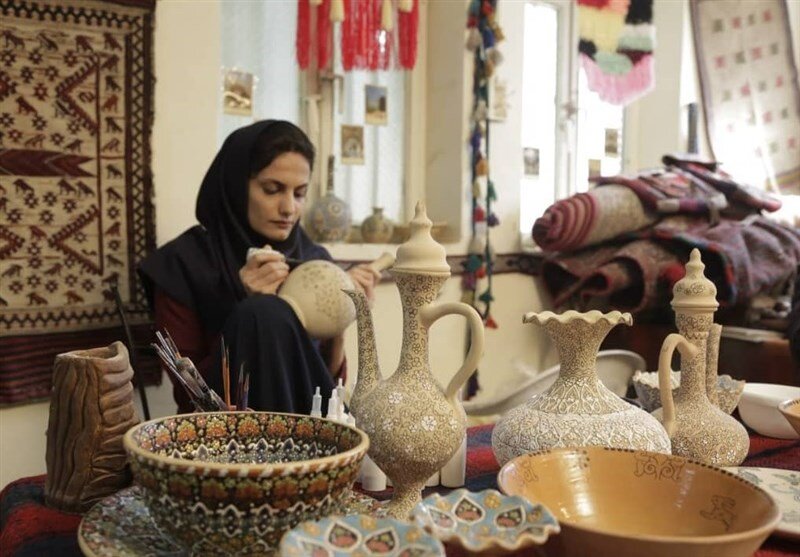Campaign launched to promote handicrafts as Noruz gifts

TEHRAN – The Ministry of Cultural Heritage, Handicrafts, and Tourism has launched a social campaign for using domestic handicrafts as gifts to celebrate Noruz, the Iranian New Year.
For more than a year, the coronavirus pandemic has ruined hundreds of thousands of jobs in the country including those related to craftspeople. The campaign, according to advocates, is intended to create a change and to help the handicrafts sector to emerge from a prolonged recession.
Tehran province directorate of the Cultural Heritage, Handicrafts and Tourism has adopted a motto, which is translated into “I will give handicrafts as gift this Noruz”. “Citizens are asked to use handicrafts as a beautiful and lasting Noruz gift to support the employment of craftspeople,” Parham Janfeshan, who presides over the directorate, said on Saturday.
From ancient times to today, gift-giving tradition on a fresh new year symbolizes wealth, prosperity, fertility, or luck. Perhaps the most enduring image of Noruz is about socializing, deepening family bonds, and meeting up with old friends mostly in their homes.
Last May, the deputy tourism minister Pouya Mahmoudian noted that due to the outbreak of coronavirus, suitcase exports of handicrafts were completely stopped since the month of Esfand (the last month of the year), and official exports of handicrafts experienced a steep decline. “Some 295 fields of handicrafts are currently practiced across Iran with more than two million people engaging, majority of whom are women… Handicrafts also play an important role in the economy in our rural villages,” she said.
Over the past couple of years, dozens of high-quality Iranian handicrafts have been honored with the UNESCO Seal of Excellence. With 14 entries, Iran ranks first globally for the number of cities and villages registered by the World Crafts Council, as China with seven entries, Chile with four, and India with three ones come next. In late January, the cities of Shiraz, Malayer, and Zanjan and the village of Qassemabad were designated by the WCC- Asia Pacific Region, putting Iran’s number of world crafts cities and villages from ten to 14.
Iran exported $523 million worth of handicrafts during the past calendar year 1398 (ended March 19, 2020). Of the figure, some $273 million worth of handicrafts were exported officially through customs, and about $250 million was earned via suitcase trade (allowed for customs-free and tax-free transfer) through various provinces, according to data provided by the Ministry of Cultural Heritage, Tourism and Handicrafts. Ceramics, pottery vessels, handwoven cloths as well as personal ornamentations with precious and semi-precious gemstones are traditionally exported to Iraq, Afghanistan, Germany, the U.S., the UK, and other countries.
AFM/
Leave a Comment